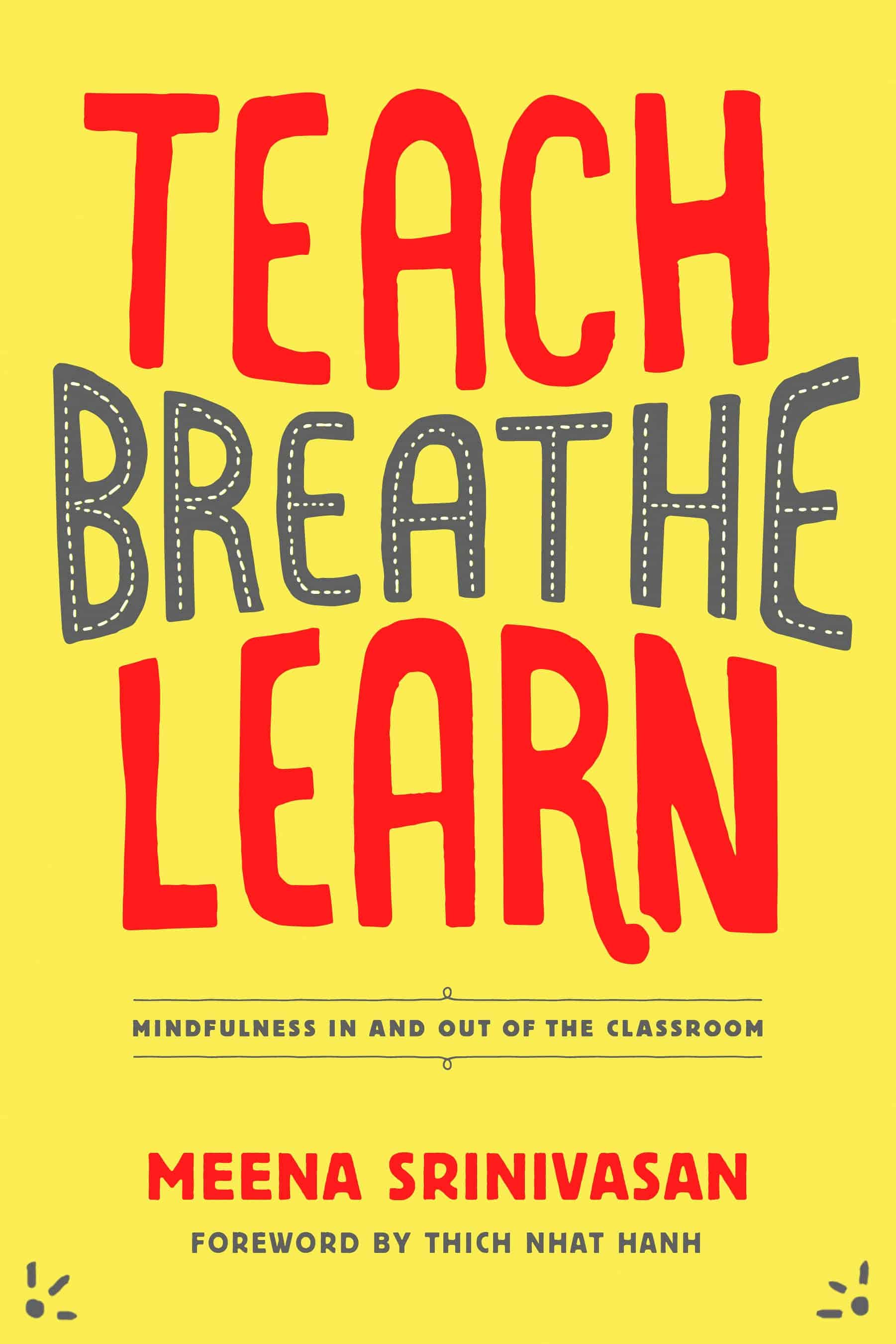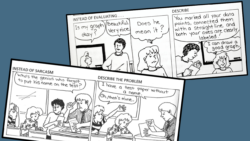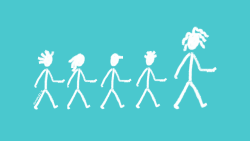
Teach, Breathe, Learn: Mindfulness in and out of the Classroom
by Meena Srinivasan, 224 pages, Parallax Press, September 2014
Buy Now
[The links in this article are Amazon Affiliate links. If you click these and make a purchase from Amazon, I will receive a small commission at no extra cost to you. Thanks for your support!]
Imagine an eighth-grade girl. Let’s call her Jasmine. Jasmine just heard a bit of gossip about the most popular girl in school — something that will likely destroy the girl’s reputation, at least in the short term. Under typical circumstances, Jasmine would share the gossip with her friends, thrilled to be the first to break the story.
But Jasmine is not a typical eighth grader. Because her school has given her mindfulness training, she stops before repeating the gossip to ask herself four questions: Are the words I am about to speak true? Are they necessary? Are they beneficial? Are they kind?
And because she cannot answer “yes” to any of these questions, she holds her tongue.
If the students and teachers at your school were taught to be more mindful — to focus more clearly, calm themselves when powerful emotions arise, and respond thoughtfully when quick decisions must be made — school would be different. Calmer. Healthier. Meena Srinivasan’s brand-new book, Teach, Breathe, Learn, can help you make that happen.
A Practical Guide from an Experienced Teacher
The material in this book comes from Srinivasan’s own teaching experience. Just a few years into her own teaching career, she overheard some of her students complaining about her: “Watch out,” one of them said. “Ms. Srinivasan is in a really bad mood today — class sucked!”
“In a flash,” she writes, “I learned that my emotional state is transmitted to my students regardless of the lesson I’m teaching . . . Even though I had studied at some of the best educational institutions in the world, I came to my profession with no training in how to manage stress or cultivate joy, happiness, and resilience . . . I had no ability to help my students learn how to work with difficulties or feel at peace — how could I teach them these most important life skills if I didn’t have them myself?”
So she attended a mindfulness retreat taught by none other than Thich Nhat Hanh, whose many books on mindfulness have taught millions of people how to be more present in their lives. She spent the next few years working on her own mindfulness practice and experimenting with ways to share what she learned with her own students. Teach, Breathe, Learn is the result of those years, a manual “for anyone and everyone who wants to work with children more effectively and joyfully.”
Part 1 of the book introduces the reader to basic mindfulness principles like focusing on your breath, mindful walking, and mindful eating. In Part 2, we learn how to further practice mindfulness by sharing it with others informally and by starting practice groups with colleagues.
Part 3 offers a complete mindfulness curriculum to use with students. Lessons include “Mindful Speech and Making Healthy Decisions,” “Using Technology Mindfully,” and my favorite, “Working with Emotions and Watering Helpful Seeds.” Because I have worked mostly with adolescents, I have seen first-hand how powerful emotions can be at this age, how they can completely overtake students and push academics far to the side. By showing students how to put their energy toward the things that bring goodness into their lives — “watering helpful seeds” — and consciously neglecting those things that bring in negativity, we teach them how to manage those emotions.
Each of the book’s eight lessons includes a sequence of activities to work through with students, along with handouts for in-class activities and homework assignments. Some of the lessons seem to be quite long and could easily be broken into two or three shorter lessons, making the curriculum versatile for use as a whole, structured unit on mindfulness or as a supplement to a separate curriculum.
Who Can Use this Book?
It’s hard to think of a situation where mindfulness wouldn’t be helpful, especially in a place as emotionally charged and dynamic as a school, but here are a few specific ways the material in this book could be applied:
Guidance Counselors will find the lessons invaluable for helping students with anger issues, depression, and social conflicts learn to manage their emotions more skillfully.
Coaches can teach their players how to “keep their heads in the game” despite emotional and social distractions, mindfully push through physical discomfort, and work more productively with teammates.
Classroom Teachers will be able to enhance their teaching of any subject by using the principles in this book. Before introducing new or challenging material, beginning group work, or giving any kind of test, they can have students focus on their breath, remove distractions, and approach each task mindfully.
Administrators will find the material in this book instrumental in helping students with regular disciplinary issues learn different ways to react to their triggers. And by encouraging faculty and staff to learn and practice mindfulness, administrators will cultivate a work environment that is supportive and calm, rather than stressful or bitter.
Parents can use the lessons to help their own children navigate school and life with more presence of mind, better focus, less distraction and more kindness.
When we think about many of our students, a story like Jasmine’s sounds like pure fantasy. But with a book like Teach, Breathe, Learn in our hands, we might find ourselves telling Jasmine stories every day. For real. ♦
Teach, Breathe, Learn is available on Amazon.
Join my mailing list and never miss another post. You’ll get weekly tips, tools, and inspiration — in quick, bite-sized packages — all geared toward making your teaching more effective and joyful. To thank you, I’ll send you a free copy of my new e-booklet, 20 Ways to Cut Your Grading Time in Half. I look forward to getting to know you better!





Thanks for adding this book to my reading list. Mindfulness has been a huge asset to my life, but I definitely find the bustling classroom setting to be one of the hardest places to remember to be mindful. Which means it must be all the more important. Thanks for providing a preview.
http://www.conquerthecruft.com
Hi, Jen. Gracias for writing this post and sharing the book with your readers. An avalance of factors cause teachers to be reactive, but if we learn to be mindful, we build better relationships with our students and model how to be steady during the storm.
Anything Thich Nhat Hanh writes is amazing. I met him in real life and he is the real deal! Peacful, centered, present, happy.